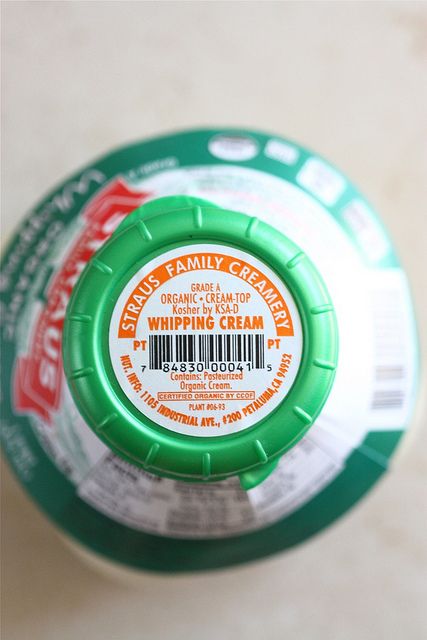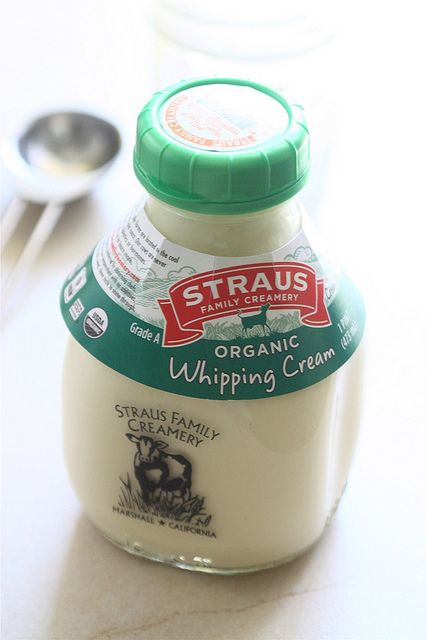DIY Food
Making Crème Fraîche at Home Has Never Been Easier
With just two simple ingredients, we can spare our wallets and whip up a small batch of the tangy product right in our own kitchens.
Popular on Food52
42 Comments
JayKayTee
August 11, 2023
I often cannot use all of the buttermilk that I buy so I freeze it. My question is can I use thawed buttermilk to make creme fraiche with the same results as using fresh buttermilk?
MacGuffin
September 18, 2021
You do realize that Julia Child popularized this hack back in the '60s?
j7n
July 17, 2021
Where I live in Europe sour cream is about half the price of fresh cream, which makes sense because cream is hard to keep fresh and the fat content is only 25-30 %. Sweet cream is the most fragile and expensive mass produced type of dairy. Strange that you can save money by "spoiling" it into a much more shelf stable product.
Souring of unpasteurized farmer's cream yields a mix of tastes. It's yellow and thick like butter. I guess the assortment of bacteria in there starts out broader. Cecile D says it's "fraiche". I'm happy to use old cream in meals, but it is inferior to commercially cultured cream.
Souring of unpasteurized farmer's cream yields a mix of tastes. It's yellow and thick like butter. I guess the assortment of bacteria in there starts out broader. Cecile D says it's "fraiche". I'm happy to use old cream in meals, but it is inferior to commercially cultured cream.
Cecile D.
August 18, 2015
Very nice except it's not creme fraiche.
The recipe for creme fraiche is one of the easiest in the world.
All you need is milk. non pasteurized. as in straight from the cow.
you let it rest for 24 hours, wait for the fat elements to go up and aggregate, and voila.
The recipe for creme fraiche is one of the easiest in the world.
All you need is milk. non pasteurized. as in straight from the cow.
you let it rest for 24 hours, wait for the fat elements to go up and aggregate, and voila.
theresa C.
August 2, 2015
This reminds of the clotted cream used by the British on their scones. I wonder which one tastes sweeter? I imagine I could substitute one for the other???
Tarika S.
February 4, 2015
I live in India where the weather's always above 90 degrees F. Would it then be suitable for me to leave it out on the counter for a shorter duration of time?
dan
June 1, 2014
Thank you, thank you, thank you. Ok so now I have to ask if anyone has tried creme fraiche ice cream? It's too die for, and if so, does anyone have a good recipe for it?
Deborah H.
February 13, 2013
Thanks for the sweet story and simple recipe- just what I needed this evening before Happy Hearts Day.
_l.o.m|ain
December 28, 2012
i always get happy when i see people using products from straus. nice post miss! :D they seriously have the best tasting whole milk.
Andyswife1991
July 10, 2012
Oh how I wish I had buttermilk in my refrigerator so I could have this on eggs tomorrow topped with a few fresh chives. Thanks for sharing.
www.whatsfordinner.blogspot.com
www.whatsfordinner.blogspot.com
aargersi
July 5, 2012
Just had a bowl of fresh picked Texas figs drizzled with my first batch of creme fraiche. I feel happy
Wendy H.
June 26, 2012
I've made my own creme fraiche for years simply by adding home-made (or good quality natural) yoghurt to warmed cream. I can't get fresh cream in Borneo but UHT cream works fine. Add about 2 tablespoons of yoghurt to 1 cup (250 ml) cream and leave in a warm place (on the bench in the tropics!), covered with cling film, til it's thick and slightly sour. Refrigerated for up to 2 weeks.
sharonpatricia
June 25, 2012
Thanks for this information. I use creme fraiche all the time in baking as a substitute for sour cream since my son gets very, very ill from sour cream. re: extra Creme fraiche - it is delicious on scones and fruit.
Jasanna
June 24, 2012
Oohh this looks delicious! I've never had or made creme fraiche!
http://munchtalk.blogspot.com/
http://munchtalk.blogspot.com/
phyllis S.
June 24, 2012
The problem here is that in order to get buttermilk one has to purchase an entire quart. It is best to use cream that hasn't been pasteurized to the max...good luck in locating any. You can also make this with a couple of tablespoons of sour cream. All in all creme fraiche has become more available in recent years....unless you want to slug down the rest of that quart of buttermilk.
A C.
June 25, 2012
I always use up buttermilk (because I'm a bit pancake obsessed). If you feel like it'll go to waste, I'd recommend using yogurt or possibly dried buttermilk
Andreas S.
June 29, 2012
One way to solve that problem is to make a buttermilk starter like the ones used in cheesemaking: Let the buttermilk package stand for 12-24h in room temperature to let the bacteria multiply (it thickens a bit more, like yoghurt), then use some of it and freeze the rest in ice-cube trays.
Some of the bacteria dies when freezing (that is why you let it multiply beforehand) but most survive the freezing process and you don't have to get new buttermilk for the next batches. Just drop a buttermilk-cube in and shake it a bit when it has thawed.
Some of the bacteria dies when freezing (that is why you let it multiply beforehand) but most survive the freezing process and you don't have to get new buttermilk for the next batches. Just drop a buttermilk-cube in and shake it a bit when it has thawed.
Rochelle B.
June 24, 2012
Is there a specific/sciencey reason why you should use pasteurized cream or is it preference? Thanks!
A C.
June 25, 2012
Yes. Ultra-pasteurized heavy cream will take longer to thicken, but it will still work just fine.
juslin
June 24, 2012
i' ve made creme fraiche and find it's best to use heavy whipping cream 38-40% if you can find it.. naturally i use organic dream and buttermilk or yogurt... excellent results ;o)
wcl
June 24, 2012
i've been doing this for a year or so, ever since i returned from France (addicted to créme frâiche) and found it was very difficult to come by. i almost always have a jar of it in my fridge now...
* one thing i have found (after reading about coveted/cultivated french C.F. cultures) is that if you save the last little bit (2-3 tbs.) of your batch of C.F. and use it as the starter for the next batch you gradually get a much mellower and sweeter result. one that i find is much closer to the French versions.
* one thing i have found (after reading about coveted/cultivated french C.F. cultures) is that if you save the last little bit (2-3 tbs.) of your batch of C.F. and use it as the starter for the next batch you gradually get a much mellower and sweeter result. one that i find is much closer to the French versions.
Currli
June 24, 2012
Thanks so much for the tip!! I too have made creme fraiche for years but never realized I could use a few tablespoons from my old batch to make a new batch ... definitely going to give this one a try!
Cdbear
January 5, 2013
With the 2-3 tbs. as a starter, how much of the other 2 ingredients do you use? Can you wait the 2 weeks that it's good, until using the starter?
wcl
February 13, 2013
Cdbear, if you use creme fraiche as a starter you don't need any buttermilk. just save 2 or 3 tbs at the end add a cup or so of cream and give it overnight on the counter. i also find the re-used CF activates the cream quicker too. and remember it will continue to thicken AFTER its in the fridge... (so don't worry if it isn't super thick at first)
weshook
June 24, 2012
yum! I've made it only once, using sour cream instead of buttermilk since that was all I had on hand--I'll have to remember to buy buttermilk and cream next store trip (just used up the last of the buttermilk this morning for pancakes.)




See what other Food52 readers are saying.